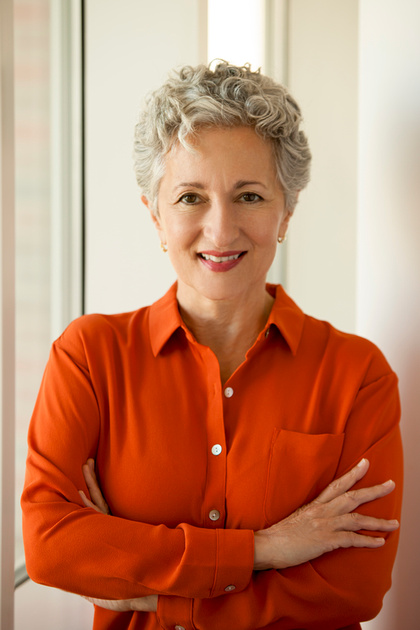“You are backstage just prior to the concert. A daunting task awaits you – one that requires tremendous faith. Though burdened with responsibility, you feel light and giddy with possibility. In those moments backstage, the world narrows to a single focus. You prepare to communicate idea and emotion in one of the most direct yet profound ways possible. The audience awaits the possibility of experiencing their emotions stirred. As a performer, you pray that you can transcend the physical execution of tens of thousands of notes and take the listener on a journey into the genius and heart of the composer.”
Monday mornings in my studio I am filled with hope for the week. This place is as sacred to me as the concert stage. Here I exercise communicating idea and emotion with my students. Here I strive to stimulate, enrich, and teach my students life lessons. It is here that great piano literature will enlighten us, and that, as a teacher, I will participate in a legacy of future generations of musicians.
Please read about some of my former students' successes:

TEACHING AND PERFORMING
For me, teaching and performing are inseparable and alike in goal. They are my contributions to the art of music and the driving force of my musical life. However, these efforts extend beyond the concert stage and music studio. They spill out into writing or lecturing, advising or coaching. I am devoted to all that is concerned with the art of performing music.
While performing is exciting, it has never totally satisfied my desire to connect with the audience. For instance, I have often yearned to turn towards the audience and have verbal interchanges. In my imagination I might say, “Wasn’t that an especially brilliant stroke by Chopin?” or “This part is outright fun to play –listen! Do you hear how these concurrent meters create this exciting rhythm?”
This is, of course, my job at SMU! As I sit at the second piano during lessons, I am energized by those moments when my students spark with understanding and turn to me with smiles or thoughtful looks. Even more rewarding is when they actually return the next week, demonstrating new and enriched comprehension. When students embrace knowledge and make it their own, I learn too.
Currently my students and I are deliciously “cooking up” new recital programs. It is extraordinary that before we barely leave the stage of one concert, we are already dreaming up the next. How funny it is that just prior to walking out on stage we wrung our hands and swore never to play another recital as long as we live!
As a professor, I guide a concert program from its inception to the moment the student takes his or her final bow. My students and I labor over every note and every nuance. The details of stage presence, acoustics, and the very seconds that one breathes between movements are fundamental. However, during the performance my role is to sit and watch as part of the audience -- experiencing either ecstatic pride, or agony, or perhaps something in between. The entire process has tremendous influence on the student-performers, the performing event, and on future events in the students’ musical lives.
Choosing the proper repertoire and performing venues for students is one of the most creative and difficult tasks a music professor has. Which pieces will inspire them, challenge them-- “show them off?” Which competitions will give them further opportunities? With what other musicians should they perform chamber music?
MY APPROACH AND VALUES
I have thought a great deal about the special abilities that make great teachers and have worked to foster and model the following three principles. In terms of process, one must (1) be able to “climb into the skin” of the student to truly discern where a student’s understanding is. Once there, one can (2) envision where the student could be, and see the steps required to elevate him or her to that new level. Finally, one must (3) know the most effective ways to communicate and direct the student through those steps.
Many years of teaching have taught me the necessity of moving freely from one type of thinking to another. Integrating the scholarly and academic with the intuitive and abstract is an effective model for me. Not only does the art of music require a balance of left and right-brained thinking-- this balance is also necessary when appealing to students’ distinct learning styles.
With diligent students I focus more on helping them realize their gifts rather than simply imparting knowledge or facts. I prefer to be open-minded, encouraging, and understanding while at the same time remaining demanding and exacting. Above all, I know that it is necessary to demonstrate respect for my students, and I demand that they show respect for their peers as well. Only within an atmosphere of acceptance can an artist grow in confidence. Criticism and non-acceptance wither creativity and imagination. Each artistic soul must be handled delicately with empathy and kindness. Improvements occur more successfully through persuasiveness and clarity of expression than from faultfinding and censure.
One of the main objectives that I have in mind as I seek to influence the art of music is to practice, teach, and model the processes of inquiry. In my own practice and preparation for concerts, this process is constant. I believe that a performer can never be satisfied with what he or she already knows. One must question, doubt, delve, wrestle and dream to come up with new, finer and more beautiful solutions to performance issues.
With the goal in mind of guiding students to be independent, I realize that I must teach them effective processes of inquiry. Therefore, I welcome problems in the lesson that I don’t have a ready answer for. If it is a problem of fact-finding, we go together to sources that will aid us. If it is a technical problem, I work it out at the second piano in front of them. We analyze the music score together, experiment with pedaling, and work out phrasing. Through watching how I break down a problem and develop solutions, the students learn to do the same for themselves.
Once in a while, I notice an interesting trend when I teach the repertoire with which I am most intimate. If I readily give all of the answers and solutions without working together interactively, some students can actually begin to exhibit signs of discouragement. They can feel passive and wonder how they “will ever know as much as the teacher…” On the other hand, if I have involved them in the process of inquiry, I find it interesting to note that they are most likely to head straight to the practice room afterwards to continue working.
Ideally, the student returns the next week with their concepts intact and with a sense of ownership of the interpretation. This is the essence of putting students’ needs first and receiving one’s rewards through students’ successes.
KEEPING TRADITIONS ALIVE
It is humbling to recollect that through one of my teachers, Mieczeslaw Horszowski, I was four handshakes away from Beethoven! Beethoven taught Czerny, Czerny taught Leschetizky, Leschetizky taught Horszowski, and my classmates and I learned from Horszowski at Curtis. Precious traditions such as this must surely be passed on in the best way that we know how.
I have been very fortunate to receive comprehensive training from several significant teachers representing varying schools and traditions. They include Oberlin-trained Richard T. Patterson, the Hungarian pianist, Gyorgy Sebok, the Italian pianist Enrica Cavalli Gulli, Matthay inspired Allen Giles, Siloti student Earle Voorhies, the Italian master teacher Guido Agosti, Mieczeslaw Horszowski and teachers influenced by the Russian style: Tong-Il Han, and Pamela Mia Paul. In addition, I took individual lessons and master classes with teachers who were able to lead me to seeing the music in new ways: Leon Fleisher, Adele Marcus, Jacob Lateiner and Vladimir Viardo were particularly influential in this way.
I have found that taking the opportunity to absorb and synthesize such a variety of influences has made me a flexible, open musician. I have never taught the tyranny of “just one way” but instead convey my favorite ways within the specific style of each composer. It is a personal goal for me that my students not all sound alike, or pick up particular mannerisms of mine. I would like them to develop their individual styles based on a thorough understanding of wide-ranging, suitable approaches.
